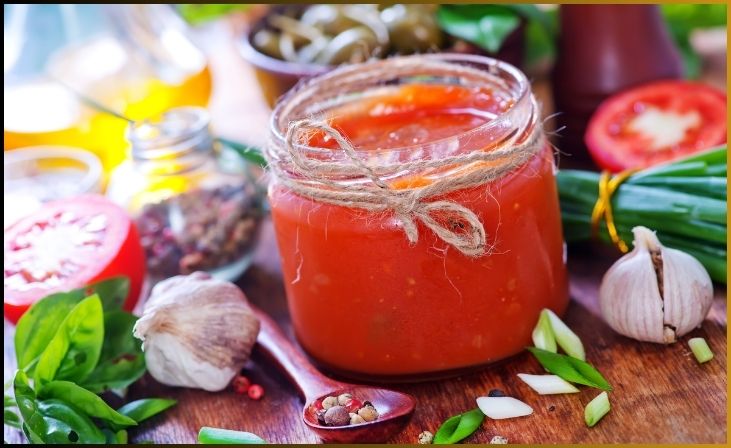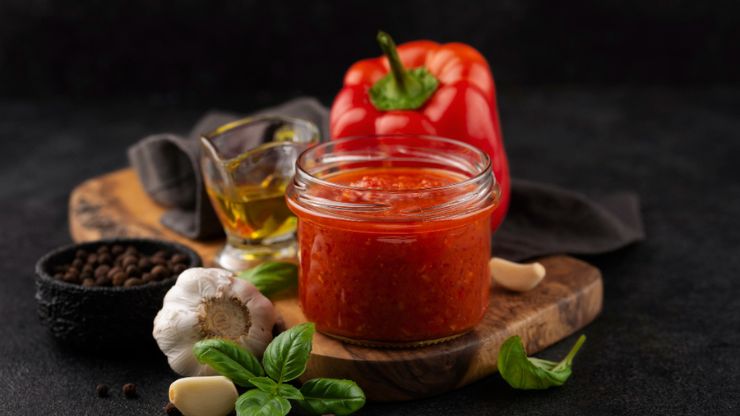Dive into the world of bold flavors and zesty delights as we unravel the secrets of making your very own fermented salsa. Beyond the confines of traditional canning and fresh salsa, fermentation introduces a depth of taste that tantalizes the taste buds and elevates this beloved condiment to new heights.
In this blog, we’ll embark on a journey through the art and science of fermentation, exploring how this ancient preservation method can transform the vibrant ingredients of salsa into a symphony of complex, probiotic-rich goodness. From the crunch of fresh vegetables to the kick of spicy peppers, fermented salsa is not just a condiment; it’s a living, dynamic creation that adds a layer of depth to your culinary repertoire.
Whether you’re a seasoned fermenter or a kitchen novice, join us as we demystify the process, share practical tips, and guide you through the steps to create your own jar of tangy perfection. Get ready to unleash your inner flavor alchemist and discover the joy of crafting a salsa that not only tantalizes your taste buds but also nourishes your gut. Let’s dive in and celebrate the fusion of tradition and innovation in the world of fermented salsa.
Table of Contents
ToggleSteps to Make Fermented Salsa
Unlock the secrets of flavor alchemy with our guide on crafting homemade fermented salsa. Elevate your culinary creations today!
Step 1: Fresh Ingredient Selection

The foundation of crafting a delectable fermented tomato sauce lies in the careful selection of fresh, high-quality ingredients. Start by choosing ripe and firm tomatoes, preferably from a local source or your own garden for that authentic, sun-kissed flavor. The type of tomato matters, so opt for varieties like San Marzano or Roma, known for their robust taste and low moisture content.
These characteristics contribute to a richer, more concentrated sauce during the fermentation process. Ensure the tomatoes are free from blemishes and bruises, as any imperfections can affect the overall quality of your sauce. By prioritizing the freshness of your ingredients, you set the stage for a tomato sauce that not only tantalizes the taste buds but also maximizes the potential health benefits of fermentation.
For More- How to Make Fermented Tomato Sauce
Step 2: Prep and Chop with Precision
Once you’ve secured the finest tomatoes, the next crucial step in the journey to crafting exceptional fermented tomato sauce is the preparation and precision chopping of these vibrant ingredients. Begin by thoroughly washing the tomatoes to remove any residual dirt or pesticides. With a keen eye, inspect each tomato for imperfections, ensuring only the highest quality makes it to your sauce. Precision is key when it comes to chopping – a sharp knife and a steady hand are your allies.
Uniformity in size allows for consistent fermentation, as each piece contributes to the complex flavors of the sauce. As you chop, consider whether you want a chunkier or smoother consistency, tailoring the cut to your personal preference. By approaching this step with care and precision, you lay the groundwork for a fermented tomato sauce that boasts both a visually appealing texture and an explosion of flavors with every bite.
Step 3: Flavor Base Creation
With the tomatoes prepped and ready, it’s time to delve into the art of crafting the flavor base for your fermented tomato sauce. This step is where the alchemy of herbs, spices, and salt comes into play, elevating your sauce from ordinary to extraordinary. Start by choosing your preferred herbs and spices—options like basil, oregano, and garlic work wonders. Experimentation is encouraged, allowing you to tailor the flavor profile to your taste preferences.
The salt not only enhances the taste but also acts as a natural preservative, facilitating the fermentation process. Strike a balance between flavors, keeping in mind that fermentation intensifies them over time. The creation of this flavor base is your opportunity to infuse the sauce with a symphony of tastes that will develop and mature as the fermentation magic unfolds. Embrace creativity, and let your taste buds guide you as you concoct a flavor base that will make your fermented tomato sauce truly one-of-a-kind.
Don't just scroll, subscribe!
BuzzTrail's unique web-stories are the cure for boredom you've been waiting for.
Step 4: Simple Brine Preparation
As you embark on the journey of crafting your fermented tomato sauce, the creation of a simple brine is a pivotal step in ensuring the success of the fermentation process. The brine serves as the environment in which beneficial bacteria thrive, preserving the tomatoes and enhancing their flavors. To prepare a straightforward brine, dissolve high-quality, non-iodized salt in filtered water. The salt concentration is crucial, typically ranging between 2-3% of the water volume.
This concentration provides the optimal conditions for lactic acid bacteria to flourish, resulting in a well-fermented and flavorful sauce. Ensure that the salt is fully dissolved before introducing it to the tomatoes. The simplicity of the brine preparation underscores its importance in facilitating a controlled and effective fermentation, transforming your ingredients into a delectable and probiotic-rich masterpiece.
Step 5: Merging Ingredients with Brine
With the brine prepared, it’s time to orchestrate the merging of your meticulously chosen ingredients with this essential solution. Begin by gently placing the chopped tomatoes into your sterilized jars, creating layers and allowing for optimal distribution. As you fill the jars, intersperse the tomato layers with the herb and spice blend, ensuring an even infusion of flavors. Pour the prepared brine over the ingredients, covering them completely.
This step not only initiates the fermentation process but also provides a conducive environment for the development of complex tastes. Take care to leave some headspace in each jar to accommodate the gases produced during fermentation. Seal the jars tightly to create an anaerobic environment, crucial for the growth of beneficial bacteria. This merging of fresh ingredients with the brine marks a crucial juncture, setting the stage for the gradual transformation of these components into a rich and tangy fermented tomato sauce.
Step 6: Jarring the Salsa

As your vibrant concoction of tomatoes, herbs, and brine marries in preparation for fermentation, the next step involves carefully jarring the salsa. Using sanitized jars is paramount to the success of the fermentation process, preventing unwanted contaminants. Gently ladle the tomato mixture into the jars, ensuring an even distribution of flavors and ingredients. A slight tap on the countertop helps eliminate air bubbles, promoting a consistent fermentation environment.
Remember to leave sufficient headspace at the top of each jar to accommodate expansion during the process. Secure the jars with airtight lids, sealing in the potential for flavor development. The act of jarring signifies the transition from raw ingredients to a controlled, fermenting environment, where the alchemical dance of bacteria and time will transform your salsa into a rich, probiotic-laden delight.
Step 7: Fermentation Time and Enjoyment
With your jars securely sealed, the magic of fermentation begins. Allow the salsa to rest in a cool, dark place for an extended period. The duration can vary based on personal preference, but a general guideline is to let it ferment for at least a week. During this time, the lactic acid bacteria work their transformative wonders, enhancing flavors and imbuing your tomato sauce with a unique tanginess.
Remember to periodically check the jars, ensuring the salsa remains submerged in the brine. A slight bubbling is a positive sign that fermentation is underway. Taste testing along the way allows you to gauge the development of flavors and adjust accordingly.
Also Read- How to Make Fermented Coleslaw
Conclusion
In just seven simple steps, you’ve embarked on a journey to craft your very own fermented salsa. This homemade delight is not only bursting with vibrant flavors but also teeming with probiotics that promote gut health. Experiment with variations, adjusting spice levels, or incorporating additional herbs to tailor the salsa to your preferences. Whether paired with tortilla chips, tacos, or grilled meats, your fermented salsa is a testament to the ease and joy of incorporating fermentation into your culinary repertoire.
FAQs
How do I troubleshoot common fermentation issues in salsa?
How do I troubleshoot common fermentation issues in salsa?
Common issues include mold, off-putting odors, or a slimy texture. If encountered, discard the batch, sterilize jars, and reassess your fermentation conditions.
Can I store fermented salsa for an extended period?
Can I store fermented salsa for an extended period?
While fermentation acts as a natural preservative, refrigeration slows down the fermentation process and enhances flavors. Consume the salsa within a few weeks for optimal taste and texture.
Can I adjust the spice level during fermentation?
Can I adjust the spice level during fermentation?
Absolutely! Experiment with different pepper varieties and quantities to achieve the desired level of heat. Taste the salsa during fermentation and adjust as needed.

